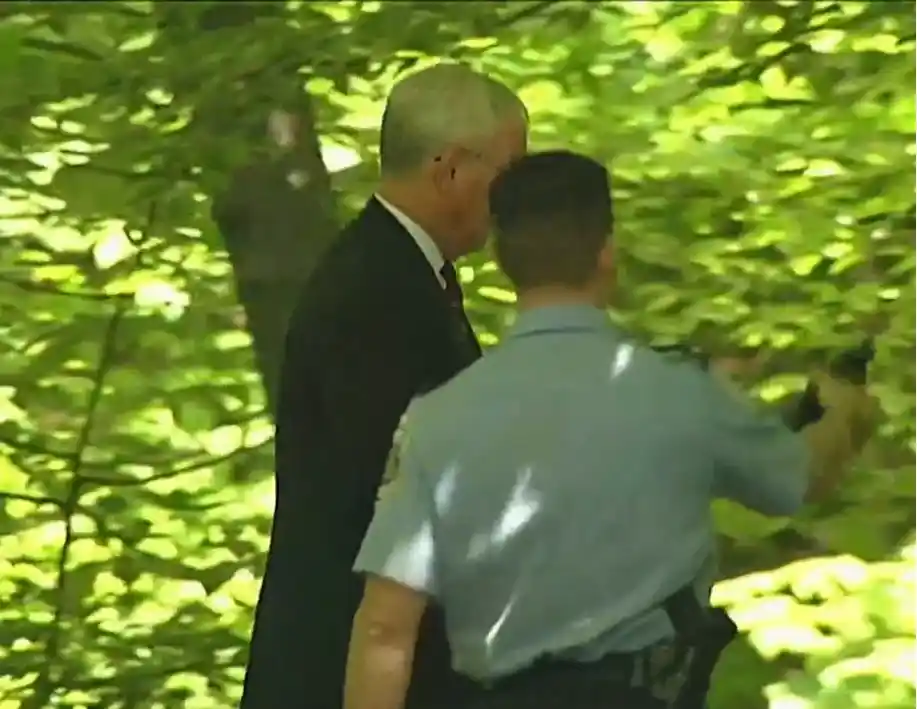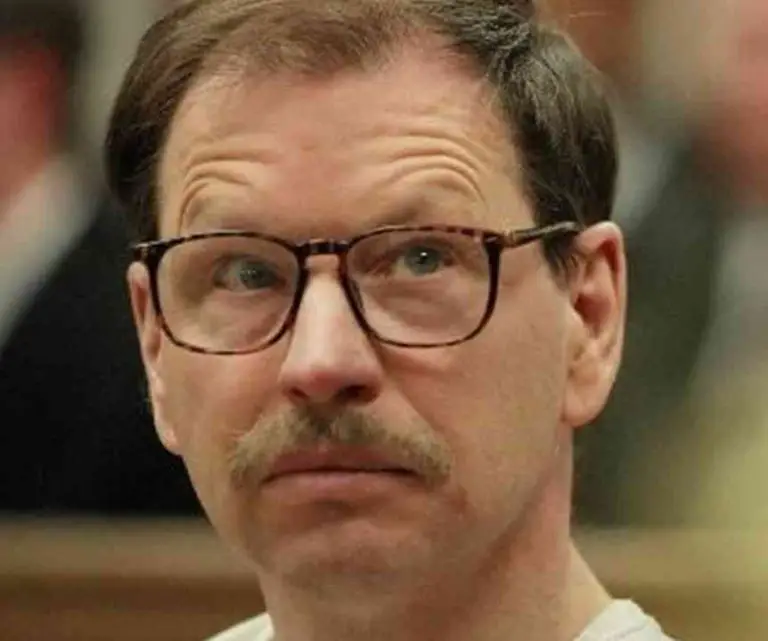The Mysteries Case of Chandra Levy
The murder of Chandra Levy, a young, ambitious intern who was working at the Federal Bureau of Prisons in Washington, D.C., rocked America to its core when the world was just getting ready for the new century.

Chandra Levy’s Bright Future Was Cut Short
Chandra Ann Levy was born in Cleveland, Ohio, on April 14, 1977. Her family moved to Modesto, California, where she grew up with her brother, Adam. Chandra’s parents, Robert and Susan Levy, are medical professionals, her father is an oncologist, and her mother is a former nurse.
Chandra was described as clever, fiercely independent, and ambitious as she grew up. Her ambitions to work in law enforcement were evident from a young age. She attended San Francisco State University after graduating high school to pursue a degree in journalism. Chandra then pursued a master’s degree in public administration at the University of Southern California.
Levy’s commitment to public service was evident. This was especially noticeable when she moved to Washington, D.C., to work as an intern with the Federal Bureau of Prisons. She was assigned to the public affairs branch and was responsible for tracking news coverage of the Bureau. Her work allowed her to meet many prominent personalities, including then-Congressman Gary Condit.
When she wasn’t working or studying, Levy was known to spend her time at the neighborhood gym or running. Those who knew her described her as health-conscious and physically active. Her love of exercise was supposed to be one of the reasons she visited Rock Creek Park, a huge urban park in Washington, D.C., where she met her terrible death.
Chandra Levy lived in Washington, D.C.’s Dupont Circle district, recognized for its historic homes and a broad selection of restaurants and stores. Dupont Circle is also famous among young professionals and interns, such as Levy, making it a lively and pleasant neighborhood to live in.
The Disappearance of Chandra Levy
Chandra Levy was nearing the end of her internship with the Federal Bureau of Prisons on April 30, 2001. She was also preparing to return to California for her University of Southern California graduation ceremony. Then she canceled her membership at the Washington Sports Club, a nearby gym, that day. Later, she made many phone calls, including one to her parents, but didn’t mention any specific plans.
Chandra was alone in her apartment in Washington, D.C., the next day, May 1, and spent the morning browsing the internet. Her computer indicated that she had searched for information on the Baskin-Robbins website, viewed a map of Rock Creek Park, and visited various news websites. According to all accounts, the young intern had an ordinary morning.
Then, she mysteriously disappeared.
Susan and Robert Levy, Chandra’s parents, became concerned when they hadn’t heard from their daughter for several days. It was unusual for Chandra not to speak, especially since she was supposed to return home soon. They reported Chandra missing to the Metropolitan Police Department in Washington, D.C., on May 6 after several calls to her went unanswered.

When the cops arrived at her apartment, there was no evidence of a forced entry or a struggle. Chandra’s suitcases were packed. Her identification, credit cards, and cell phone were all still there. Her PC had been left on. Chandra was the only thing missing.
A vast search began in the following days. Friends, relatives, and law enforcement explored the city, handing out leaflets with Chandra’s picture and contact information. However, the initial search revealed no results. The chances of finding Chandra alive declined with each passing day.
It began a lengthy and complex investigation that would take more than a year. Despite the best efforts of law enforcement, the media, and the general public, the mystery of Chandra Levy’s disappearance went unresolved until May 22, 2002, when a man walking his dog discovered her remains in Rock Creek Park.
The investigation swiftly shifted from a missing person investigation to a murder investigation, adding a chilling layer to an already puzzling case.
The Investigation Begins
The investigation into Chandra Levy’s disappearance was comprehensive, involving local and federal law enforcement and private investigators hired by the Levy family. It’s worth mentioning that, despite its length and depth, the investigation could have been improved by several errors and controversies.
The Metropolitan Police Department initially treated Levy’s disappearance as a standard missing person case after she was reported missing on May 6, 2001. There were no traces of foul play in her residence, leading authorities to speculate that she may have departed on her own. However, as the days extended into weeks and there was no trace of Levy, the authorities began to suspect foul play.
Levy’s case gained national news in July 2001 when it was revealed that she had been having an affair with then-Congressman Gary Condit. The authorities questioned Condit several times, and while he admitted to having a relationship with Levy, he insisted he had nothing to do with her disappearance. Despite the media panic, Condit was never officially identified as a suspect by the police.
The police searched many locations, including Levy’s flat and Condit’s condominium. However, a significant area, Rock Creek Park, where Levy had explored for information the day she vanished, was not searched adequately until much later.

A year after her disappearance, in May 2002, a man walking his dog found Levy’s remains in an isolated area of Rock Creek Park. Her remains’ status suggested she had been murdered, and the case was reclassified as a homicide.
Following the discovery of Chandra Levy’s body, the investigation’s focus shifted. Forensic experts examined the crime scene and Levy’s remains, but most of the possibly helpful evidence had been destroyed or corrupted because of the length of time since her death.
Ingmar Guandique was already imprisoned for assaulting two other women at Rock Creek Park and was named a suspect in 2009. Despite the lack of tangible evidence linking Guandique to the murder, he was convicted in 2010, partly on the testimony of his former cellmate.
Relationship With Gary Condit
One of the most interesting aspects of Chandra Levy’s disappearance was her relationship with Congressman Gary Condit.
At the time, Gary Condit, a Democrat from California, was a well-known political figure. He was married and had a reputation as a moderate politician who supported law enforcement and budgetary policies.
Because of her internship at the Federal Bureau of Prisons in Washington, D.C., Levy and Condit’s paths crossed. Given Condit’s political standing, his link with Levy quickly became an important focus of the investigation and the media.
When Chandra Levy’s aunt, Linda Zamsky, told police that Chandra had confided in her about her romantic relationship with Condit, accusations of an affair began to circulate. Zamsky claimed that Levy was madly in love with Condit and was sure that Condit would leave his wife for her.

Condit first denied having a romantic involvement with Levy in front of significant media scrutiny. During a third police interrogation, he admitted to the affair but maintained that he had nothing to do with her disappearance.
The media frenzy around Condit’s suspected affair with Levy may have diverted attention away from the investigation into her disappearance. The juicy details attracted the public’s interest, and Condit’s reputation took a hit, although he was never officially listed as a suspect in the case.
Condit spoke on ABC’s Connie Chung in a televised interview following the disappearance of Levy. He was heavily criticized for his evasive answers and failure to explain his relationship with Levy. The public backlash from the interview contributed to his defeat in the Democratic primary in 2002.
Ingmar Guandique: The Main Suspect
Ingmar Guandique, an undocumented El Salvadoran immigrant, subsequently emerged as the primary suspect in the murder of Chandra Levy.
Guandique was already in prison for attacking two women in Rock Creek Park around the time Levy went missing. On both occasions, he attacked the women from behind while they were jogging, a scenario that authorities suspected led to Levy’s death. Notably, these attacks took place at the exact location where Levy’s body was later discovered.
Despite these connections, Guandique’s case was not immediately linked. Guandique was not officially listed as a suspect until 2009, nearly eight years after Levy’s kidnapping. The prosecution relied heavily on the testimony of his former cellmate, Armando Morales.
Morales stated Guandique confessed to him that he murdered Chandra Levy. He testified that Guandique told him he attacked Levy at the park but didn’t want to murder her. Instead, Guandique allegedly stated that he felt frightened when Levy began screaming and tried to stop her, killing her in the process.
With no physical proof linking Guandique to the crime, Morales’ testimony became the case’s linchpin. Guandique was tried and convicted of murdering Chandra Levy in 2010 and was sentenced to 60 years in prison.
However, Guandique’s attorneys successfully argued for a new trial in 2015, citing concerns about Morales’ trustworthiness. Morales, a seasoned jailhouse informant, was found to have lied on the stand. Questions were also raised regarding the prosecution’s failure to reveal information about Morales’ previous cooperation with law enforcement.
Acquittal of the Main Suspect
The acquittal of Ingmar Guandique, the man convicted of murdering Chandra Levy, is a significant episode in this ongoing tragedy.
Guandique was sentenced to 60 years in jail after his conviction in 2010. However, doubts about the integrity of the crucial witness, Armando Morales, a former cellmate of Guandique, began to appear. Morales stated that Guandique confessed to him about killing Levy, testimony that was critical in achieving the conviction in the lack of physical evidence.

Guandique’s counsel successfully petitioned for a new trial in 2015, alleging that the prosecution’s case was based on a weak foundation – Morales’ testimony. They pointed out that Morales was a seasoned jailhouse informant who had previously lied to law enforcement groups about his position as an informant.
There were also allegations that prosecutors withheld potentially exculpatory facts about Morales’ previous cooperation with law enforcement. This alleged misconduct by the prosecutor was central to the defense’s case for a new trial.
However, before the retrial could begin, the U.S. The District of Columbia Attorney’s Office made an unexpected announcement. On July 28, 2016, they announced the dismissal of all charges against Guandique, claiming “unforeseen developments.” While the nature of these developments was not disclosed, reports indicate that they were related to Morales’ trustworthiness.
The decision to drop the charges was an admission that the prosecution’s case, which relied heavily on the evidence of a possibly untrustworthy informant, was too weak to proceed. In Levy’s case, Guandique was later released from prison upon maintaining his innocence.
However, Guandique’s acquittal does not constitute an admission of innocence. Due to a lack of evidence, the prosecution against him was dismissed, leaving the question of who murdered Chandra Levy unresolved. While Guandique is no longer officially charged with Levy’s murder, her death remains a mystery.
This turn of events serves as a harsh reminder of the necessity of trustworthy, corroborative evidence in a criminal inquiry and the inevitable dangers of depending primarily on jailhouse informant statements.
Guandique, who had always maintained his innocence in Levy’s case, was released from prison and deported to El Salvador once his charges were dismissed.
The Chandra Levy Case: Investigative Mishaps
The investigation into Chandra Levy’s death has been marred by a series of mishaps and missteps, which many think contributed to the case remaining unresolved. Below are some of the significant errors that happened during the investigation.
Tunnel Vision on Gary Condit
The media had an enormous effect on the investigation’s outcome. Chandra Levy’s reported romantic involvement with Congressman Gary Condit rapidly became the focus of media attention. Due to the overwhelming scrutiny, investigators were forced to focus excessively on Condit as a person of interest.

Ignoring Potential Leads
Because of the media and police fixation on Condit, investigators spent excessive time and resources looking into his involvement. As a result, they overlooked other potential leads and suspects who could have been significant in the early phases of the inquiry.
Delayed Search
Despite the fact that Chandra Levy had searched for the location of Klingle Mansion in the Rock Creek area on her computer the day she vanished, the police did not conduct a thorough search of the area. Her remains were eventually found in this area only a year after her disappearance.
Missed Evidence
Nature and elements destroyed much of the potential evidence in Rock Creek Park due to the delayed and insufficient search. When her bones were discovered, decomposition and exposure to the elements had progressed to the point where crucial forensic evidence was likely lost.
Building a Case on Thin Grounds
When Ingmar Guandique was named a suspect, the prosecution relied heavily on the testimony of Guandique’s former cellmate. Guandique, according to his cellmate, confessed to killing Chandra Levy. However, this was a fragile foundation, as jailhouse informants are frequently regarded as untrustworthy.
Communication Breakdowns
Lack of Coordination
There have been reports of a lack of coordination and communication among the various units of the Metropolitan Police Department. This slowed the flow of information, generating delays and limiting the investigation’s efficacy.
Inadequate Information Sharing
There needed to be more information exchange between the police, FBI, and other agencies. Because of the lack of inter-agency interaction, crucial pieces of information were likely overlooked or ignored.
Conclusion
The case of Chandra Levy’s disappearance and murder remains deeply ingrained in the American mind. The inquiry has taken various twists and turns, from the media frenzy surrounding her alleged affair with Congressman Gary Condit to the controversial conviction and eventual release of Ingmar Guandique. However, the subject of who murdered Chandra Levy remains unresolved more than two decades later.
The case exposed many errors and mistakes on the side of the investigators. The overemphasis on Condit, largely due to media pressure, the delay in thoroughly searching Rock Creek Park despite it being a potential lead, the reliance on an untrustworthy jailhouse informant, and a lack of effective communication and coordination between different units of law enforcement all contributed to the case’s eventual unsolved status.
Chandra Levy was a bright young woman with a bright future ahead of her. Her death was a tragedy that had far-reaching consequences for her family and the entire country. The case’s consequences prompted extensive scrutiny of the police’s handling of missing people cases, highlighting the media’s capacity to influence public opinion and investigative focus.
While Ingmar Guandique was previously suspected of being Levy’s murderer, subsequent reservations about the critical testimony that led to his conviction highlight the need for careful, evidence-based investigation work. The dismissal of the accusations against Guandique restarted the case, leaving the murder unsolved and a family without closure.
Chandra Levy’s experience serves as a cautionary tale. It emphasizes the crucial need to conduct investigations methodically and objectively without being misled by media attention or the attraction of quick findings. Furthermore, it emphasizes the ongoing need for breakthroughs in forensic science, which may one day offer the evidence required to bring instances like Chandra’s to a close.
Despite the passage of time, there is still optimism that one day there will be definite answers to the mystery surrounding this case for so long. Until then, Chandra Levy’s memory reminds us of the never-ending search for justice in the face of adversity.
Sources
https://www.justice.gov/archive/usao/dc/news/2011/feb/11-048.pdf
https://archives.fbi.gov/archives/washingtondc/press-releases/2010/wfo112210.htm







